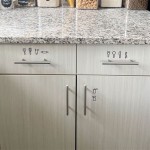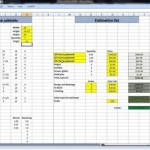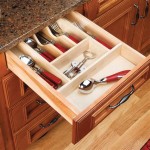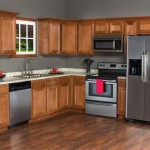How To Protect Laminate Flooring In Kitchen Cabinets
Laminate flooring is a popular choice for kitchens due to its affordability, durability, and water resistance. However, the high-traffic nature of kitchens can lead to wear and tear on laminate flooring, especially near cabinets. Even though laminate flooring is designed to withstand everyday wear, moisture, and spills, its edges are less resistant. Therefore, it's essential to take measures to protect laminate flooring in kitchen cabinets.
Use Cabinet Feet
One of the most effective ways to protect laminate flooring in kitchen cabinets is to use cabinet feet. These are small, adhesive pads that attach to the bottom of cabinet legs. A good set of cabinet feet will distribute the weight of the cabinets evenly and will help to prevent scratches and dents in the laminate flooring.
When choosing cabinet feet, consider the weight of your cabinets and the material of your laminate flooring. Some materials are more prone to scratching than others, so choose cabinet feet that are specifically designed to protect the type of laminate flooring you have. Many different types of materials are suitable for cabinet feet, but rubber and felt are generally the best choices for laminate flooring. Look for pads that are slightly larger in diameter than the cabinet leg and that are designed to conform to the shape of the floor.
If you have existing cabinets, you may want to consider using new cabinet feet to protect your laminate flooring. They are relatively inexpensive and easy to install. Simply clean the bottom of the cabinet legs, peel off the adhesive backing, and attach the cabinet feet. It won't take long to install these, and it will go a long way in protecting your laminate flooring from damage.
Use Protective Strips
Another way to protect laminate flooring in kitchen cabinets is to use protective strips. These strips are made of a variety of materials, such as vinyl, rubber, or aluminum. These strips are typically applied to the edges of the cabinets and the floor to prevent scratches and dents. They can be purchased in a variety of sizes and colors to match your existing cabinets.
Protective strips can help to create a barrier between the cabinets and the floor. They can also be used to cover any existing scratches or dents in the laminate flooring. If you're concerned about water spills, you can use vinyl or rubber protective strips that can be wiped clean. They are also easy to install and remove.
If you're concerned about the aesthetic impact of protective strips, look for strips that are clear or that closely match the color of your cabinets. There's also the option of using a protective strip that sits flush with the base of the cabinet. This will prevent the strip from being noticeable, but it won't provide as much protection as a raised strip.
Maintain Your Laminate Flooring
Apart from using protective measures, maintaining your laminate flooring is important for its longevity. Regularly sweep or vacuum your laminate flooring to remove dust and debris. These are particularly important for the areas near cabinets. This will help to prevent scratches and dents.
When cleaning your laminate flooring, avoid using harsh chemicals or abrasive cleaners. Harsh cleaners can damage the surface of the laminate flooring and make it more susceptible to scratches. Use a mild detergent and water to clean your floor. You can also purchase a specialized laminate floor cleaner, which is formulated to clean and protect the surface of your laminate flooring.
It is also important to avoid dragging heavy objects across the flooring. This can cause scratches and dents in the laminate flooring and lead to premature wear and tear. Use a dolly or cart to move heavy objects around your kitchen. Additionally, avoid placing hot pots or pans directly on the floor. These can cause heat damage to the laminate flooring.
By taking these steps, you can help to keep your laminate flooring in top condition for years to come. The measures you take will help protect your flooring from the wear and tear associated with everyday use in the kitchen. These steps are easy to follow and can make a significant difference in the longevity of your laminate flooring.

Tips For Protecting Laminate Flooring Inspiration Moms

Tips For Protecting Laminate Flooring Inspiration Moms

Do You Install Floating Floor Under Cabinets Wood Flooring

Do You Install Floating Floor Under Cabinets Wood Flooring

Do You Install Floating Floor Under Cabinets Wood Flooring

Do You Install Floating Floor Under Cabinets Wood Flooring

Can You Replace Kitchen Flooring Without Removing Cabinets

Best Ways To Protect Your New Kitchen Cabinets The Rta

Do You Install Floating Floor Under Cabinets Wood Flooring

How To Protect Your Kitchen S Hardwood Flooring Interiorzine








